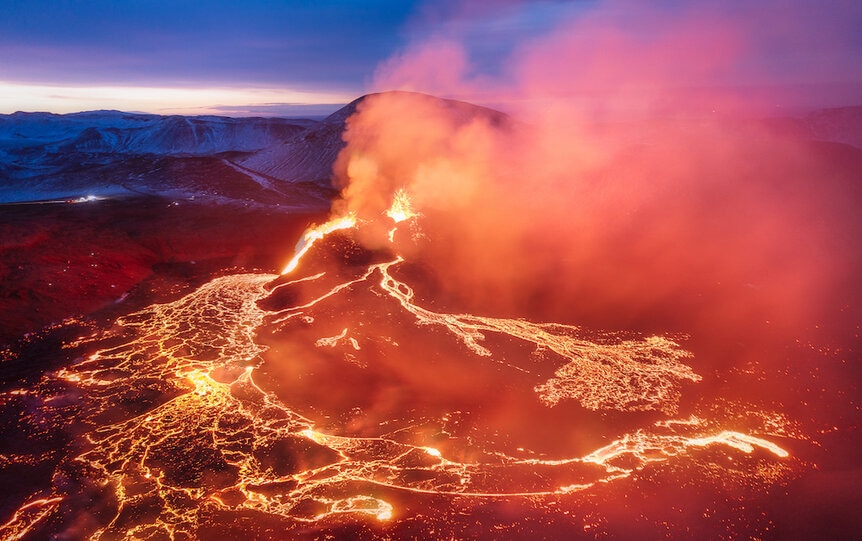Create a free profile to get unlimited access to exclusive videos, sweepstakes, and more!
European Supervolcano Erupts Every 10,000 Years, So How Long Until the Next One?
Could be any day now.
From Jurassic Park to Jurassic World, the human-dinosaur power dynamic never really changed. In each case, humans were at the mercy of powerful prehistoric creatures and obliged to do whatever it took to survive. But by the time we reach the fifth installment, Jurassic World: Fallen Kingdom (streaming now on Peacock), things have changed.
It’s a few years after the tragic events at Jurassic World and the remaining dinosaurs still living on the now-abandoned island are threatened by a looming volcanic eruption. The island of Isla Sorna is fictional but modeled after (and shot on location on) Nā Moku o Hawai‘i (the Hawaiian islands), a famously volcanic island chain. Setting up shop on an active volcano practically assures you’ll have to deal with an eruption sooner or later, but it turns out we might be under threat of volcanic eruption ourselves. And, like the dinosaurs, we had no idea.
Underwater Supervolcano Uncovered in the Mediterranean Sea
A few years back, scientists studying part of the Mediterranean Sea off the coast of Italy caught sight of something lurking underneath the seafloor. Unfortunately, the data at hand didn’t have the resolution to figure out what it was, so they had to return later with better tools. The results of that second excursion revealed a previously unknown series of supervolcano “megabeds” and were published in the journal Geology.
RELATED: Up to a Million Skate Eggs Found at Volcanic Underwater Nursery
Using a combination of geophysical data from the CHIANTI project, core samples of the area, and acoustic mapping, researchers found four massive volcanic sheets deposited at the bottom of the Mediterranean over the last 40,000 years. The oldest volcanic megabed was laid down 40,000 years ago, the next 32,000 years ago, the third 18,000 years ago, and the most recent just 8,000 years ago. Each of the beds are between 10 and 25 meters (33 and 82 feet) thick and punctuated by layers of other sediment.
Based on the current dates, supervolcano eruptions occur in the area every 8,000 to 14,000 years, with a 10,000 year average. With the most recent eruption happening 8,000 years ago, that puts us right at the beginning of the next eruption range. However, the date ranges aren’t as well understood or as constrained as researchers would like. Additional research is needed to better understand the underlying mechanisms and the cycle at play, before we can make any reliable predictions about future risk.
The odds that this Mediterranean supervolcano will pop off right after we found out about it are pretty slim, at least on human timescales. It’s unlikely that it will blow its top tomorrow or even in your lifetime, but on geological timescales we might be in the danger zone. If it does go off, hopefully we’ve got Claire Dearing and Owen Grady on the case.
In the meantime, snag a first viewing or a rewatch of Jurassic World: Fallen Kingdom, streaming now on Peacock.































